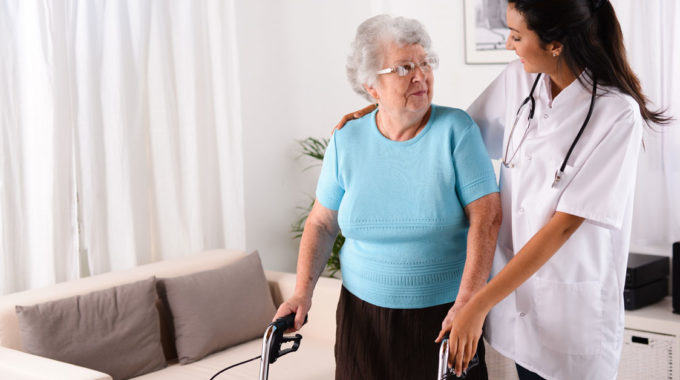
Palliative Rehabilitation in Advanced Cancer
When people are tired and in pain, exercise may seem counterintuitive. Nevertheless, hospice agencies often use various physical therapy & rehabilitative approaches to help their patients manage symptoms and improve quality of life. What approaches are available and what works? These questions are far from answered, but, earlier this month, the American Journal of Hospice & Palliative Medicine published a first-of-its-kind systematic review addressing the subject.1 Their review focused on patients with advanced cancer, a major diagnosis in hospice care.
Symptoms in Advanced Cancer
In hospice, cancer can be one of the more burdensome diseases, but research shows hospice can manage those symptoms well. Two out of three cancer patients experience pain during the terminal stage.2 The distressing symptoms of advanced cancer include pain, weakness, fatigue & extreme exhaustion, breathlessness, nausea, vomiting, constipation, sleeping disorders, lymphedema, venous thrombosis, and more.3
Palliative Rehabilitation Approaches in Advanced Cancer
Prina Vira, BPT and the other authors of the current study did not seem to suggest palliative rehabilitation can replace pharmacotherapy and other approaches. Hospice nurses commonly use sedatives and high-dosage opioids to control symptoms. For hospice patients, this has been found safe and effective, and it is associated with lengthened life.4 The rehabilitative approaches surveyed by Vira et al. tended to show moderate results, suggesting palliative rehabilitation could be used as an adjunct to usual care.
- Functional Decline: Advanced cancer can reduce muscular strength and endurance to the point where patients lose their independence. A six-week, structured exercise program was found to improve strength and mobility, even among hospice patients with cancer. Even minimal levels of exercise to the patient’s tolerance and acceptance proved better than no exercise.
- Cancer Fatigue: In advanced cancer, insomnia, inactivity, anemia, prolonged inflammation, and pain can all contribute to fatigue and extreme exhaustion. Various exercise programs improved fatigue. Three weeks of exercise may be needed for a significant effect.
- Cancer Pain: Therapeutic massage was shown to reduce the intensity of cancer pain and decrease the chosen dosage of analgesics.
- Cancer Lymphedema: Complex decongestive therapy (CDT) serves as a standard approach in general lymphedema cases, but what about hospice patients? One study found that medicine combined with short-stretch compression bandaging (a component of CDT) does indeed significantly reduce limb volume.
- Sleep Disturbances in Cancer: Vira et al. found a study examining the effects of relaxation training on this symptom. The effects were not statistically significant.
Summary
Jane Toot first described palliative rehabilitation in 1982.5 In the current systematic review, researchers used digital searches to identify 2,102 studies that may describe palliative physical therapy interventions in advanced cancer. Only nine studies both addressed the subject and were of sufficient quality. The researchers conclude that a structured exercise protocol, massage therapy, TENS, and compression bandaging are useful in alleviating certain symptoms for cancer patients in hospice care. However, they call for more high-quality studies to be conducted in the future.
References
- Vira P, Samuel SR, Amaravadi SK, Saxena PP, Rai PV S, Kurian JR, Gururaj R. Role of Physiotherapy in Hospice Care of Patients with Advanced Cancer: A Systematic Review. American Journal of Hospice and Palliative Medicine®. 2021 May;38(5):503-11.
- Van Den Beuken-Van MH, Hochstenbach LM, Joosten EA, Tjan-Heijnen VC, Janssen DJ. Update on prevalence of pain in patients with cancer: systematic review and meta-analysis. Journal of Pain and Symptom Management. 2016 Jun 1;51(6):1070-90.
- Jensen W, Bialy L, Ketels G, Baumann FT, Bokemeyer C, Oechsle K. Physical exercise and therapy in terminally ill cancer patients: a retrospective feasibility analysis. Supportive Care in Cancer. 2014 May;22(5):1261-8.
- Bercovitch M, Waller A, Adunsky A. High dose morphine use in the hospice setting. A database survey of patient characteristics and effect on life expectancy. Cancer. 1999; 86: 871-877.
- Wilson CM, Briggs RW. Palliative Care, Hospice, and Physical Therapy: Where Have We Been? Where Are We Now? Where Are We Going?. Rehabilitation Oncology. 2020 Jan 1;38(1):7-8.





